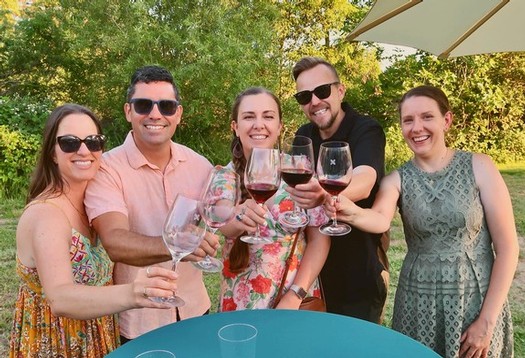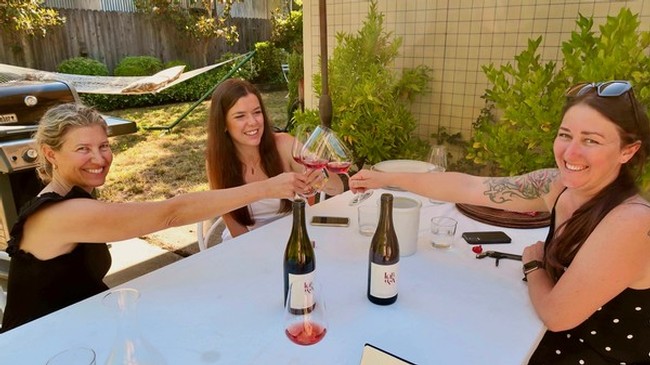Letters from Lodi
An insightful and objective look at viticulture and winemaking from the Lodi
Appellation and the growers and vintners behind these crafts. Told from the
perspective of multi-award winning wine journalist, Randy Caparoso.
Is appreciation of wine as varietals becoming passé? Part 1, history, terroir, rebellion
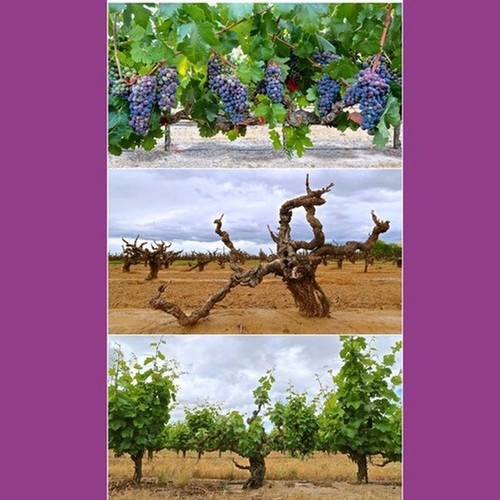
Harney Lane Vineyards Zinfandel sources (from top): Home Ranch, Scottsdale Vineyard, and Lizzy James Vineyard.
First, let's taste three different Lodi Zinfandels, all made by the same local winery, Harney Lane Vineyards:
• The 2020 Harney Lane "Home Ranch" Zinfandel ($32) is almost an essence of what many people love about Zinfandel—round, plumpish yet bouncy on the palate, with velvety flavors, almost plush in their softness, signaled by exuberant aromas of chocolaty fresh berries and a touch of strawberry. "Friendliness" personified.
• The first thing you notice when sipping the 2021 Harney Lane "Scottsdale Vineyard" Zinfandel ($42) is that it is rounded yet not so much "bouncy" as curvy, almost languorous in the way it plops itself down on the palate, letting silken, aromatic flavors suggesting red berries, veering towards blueberry, stretch long and sensuously across the palate. Grown-up style Zinfandel.
• Then there is the 2021 Harney Lane "Lizzy James Vineyard" Zinfandel ($45) which, instead of stretching across the palate like a Mata Hari on a chaise lounge, seems to dance and skip freely with bright, pretty, flowery scented red berry/black cherry/rose petal qualities peeking out from under a gossamer gown tinged by subtle vanillin swirls, made all the more lively by a perceptively edgy sense of fresh fruit acidity. Preternatural sophistication.
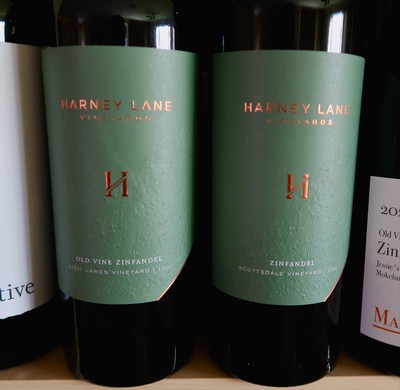
Harney Lane Zinfandels under the same label, but expressing distinctively different tastes reflecting their vineyard sources, Lizzy James Vineyard and Scottsdale Vineyard.
So why the comparison? This is an example of how one winery can produce three different Zinfandels from three different vineyard sources—located two to three miles away from each other—and engineer it so that each wine retains its own character. They all, in fact, taste pretty much like "Zinfandel," yet nearly everything about each—their varying fruit profiles and texturing, contrasting nuances of oak barrel aging, and individualistic feels of acidity and tannin—is different. The winemaking is adjusted to the vineyards, not the other way around. Like having three daughters, loving each one equally for their different looks, tastes, and personalities.
What is even more amazing is that while made by the same producer, all three wines resist the compulsion, so common in the California wine industry, to carry sensory stamps marking them as being part of the same brand. This, if anything, is where many Lodi wineries are going, or at least trying to go: Conscious of remaining true to differences despite market demands to meet generally accepted standards pertaining to varietal character.
Wine lovers at recent Lodi Wine Experience, on their own journey to vinous somethings.
So why are younger wine consumers still not entertained?
"Varietal character" is how at least three recent generations of Americans have been conditioned to appreciate wine, at least on the premium level of the table wine category, which has dominated wine sales since the mid-1980s when Chardonnay, Cabernet Sauvignon, and White Zinfandel first hit the market as a three-headed monster.
Prior to that, between the mid-1930s and 1960s, most Americans consumed either sweet dessert wines or inexpensive generic wines. The groundwork for the modern wine boom in the U.S. was laid during the late '60s, when small "boutique" California wineries, particularly in Napa Valley, began to pop up and drum up enthusiasm for handcraft wines. It made sense, at that time, that the best wines in the world come from the best grapes. Therefore, bottlings carrying varietal labels became synonymous with premium quality—the best California wines you can buy.
There seems to be some evidence, however, that many of today's younger adults of legal drinking age—between their early 20s and mid-30s—are less impressed by conventional ideas of premium wines than previous generations, and it's getting serious. Wineries are feeling the bite in sales that are either stagnant or receding and grape growers have recently been seeing entire blocks go unpicked.
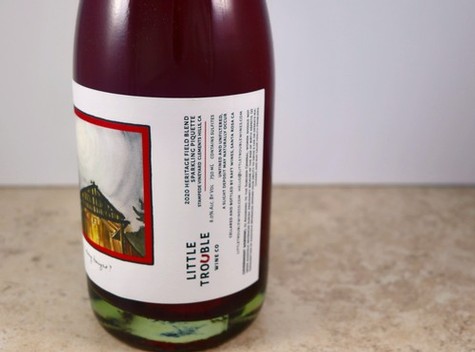
Little Trouble Wine Co.'s Sparkling Piquette is made from a historic old vine Lodi Zinfandel growth (Stampede Vineyard)—a feathery light (8% ABV), prickly tart style of wine appealing to many younger consumers.
Many industry pundits chalk up this alarming state of affairs in the market to oversupply—a worldwide grape glut. Others say the explanation is simpler: The youngest of the country's potential wine consumers just aren't feeling it. Or putting it more bluntly, as Boomers die, there are not enough new consumers to pick up the slack.
Yet there has never been a better time to enjoy premium wines; not just domestic products, but also outstanding wines, selling for outstanding prices, from all over the world. Overall wine quality, from the lowest-priced products to the highest-priced premium bottles, is better than ever before.
So exactly what is it that the latest generation, who have it way better than previous generations, don't find to their liking?
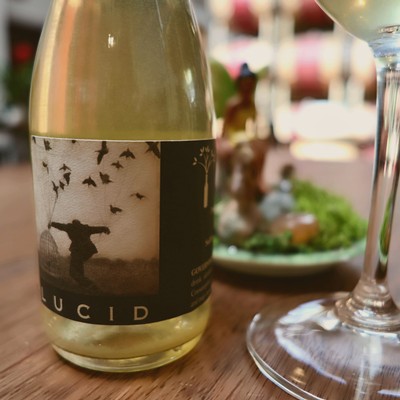
A Pét-Nat style of Lodi Albariño under the Lucid label; a slightly sparkling style of wine appealing to younger consumers with a taste for lighter alcohol dry wines with a sharper acidity than what previous generations of wine lovers have preferred.
If I had the exact answer I'd be a zillionaire. But there is one thing we do know: Younger consumers of adult beverages do not automatically accept the premise that the most interesting wines are premium varietals—the Cabernet Sauvignons, the Chardonnays, the Pinot Grigos, Pinot Noirs, Sauvignon Blancs, Merlots, et al.—that dominate the market and enthrall Boomers, Gen Xers and even a good chunk of Millennials. Younger consumers want... something else.
Whatever that something is, it has to speak to them as being a little more real, authentic, or meaningful to their young lives. What we also know is that, in recent years, there has been a seemingly outsized interest in various oddball categories of wine such as "Natural," "Orange," "Pét-Nat," "Piquette," "Glou-Glou"... and if you have to ask what any of these wines are, or question the purpose of their existence, then you are not on the same page as these seekers of vinous something.
Yet even among older generations, conventional conceptions of varietal wine have recently begun to shift in terms of how they are appreciated, as a perception of wine quality in general changes. More and more, the question being asked is: What exactly constitutes a well-made varietal wine? Let's start at the beginning when the concept of varietal wines was first conceived.
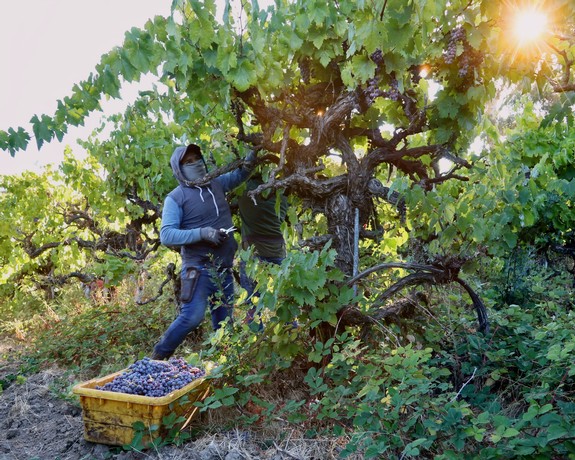
Recent harvest of gigantic Mission grapevines in Mokelumne River-Lodi—a cultivar shunned for over 150 years by the conventional California wine industry, but appealing to many of today's younger wine consumers precisely because it produces lighter, mildly fragrant, spicy styles of red wines, the opposite of fuller bodied, intense styles of varietal reds in the vogue today.
Origin of the varietal wine category
The wine term "varietal," about a wine made from a single grape variety, was first established in the mid-1930s, following the repeal of Prohibition in 1933. Up until that time, most of the table wines produced in the U.S. were made from mixes of grape varieties sold under European place names, such as Burgundy, Chablis, Sauterne, Chianti, et al. Why? Because there were all kinds of grapes planted in the vineyards of California, where over 99% of the grapes in the U.S. were cultivated, and so labels allowing absolutely any variety in the mix were just the ticket for the burgeoning wine production industry.
In 1935, a Federal Alcohol Administration (FAA) was created to establish guidelines for the production and sales of wine and other alcoholic beverages in the interest of "preventing deception of the consumer." While the American wine industry loved the freedom of generic wines, it was also cognizant that higher quality wines could be made from grapes associated with higher quality. This led to a federal law defining what we now call "varietal wines," which according to 1930s legislation required wines sold by the name of a single grape to contain at least "51% juice from that grape variety."
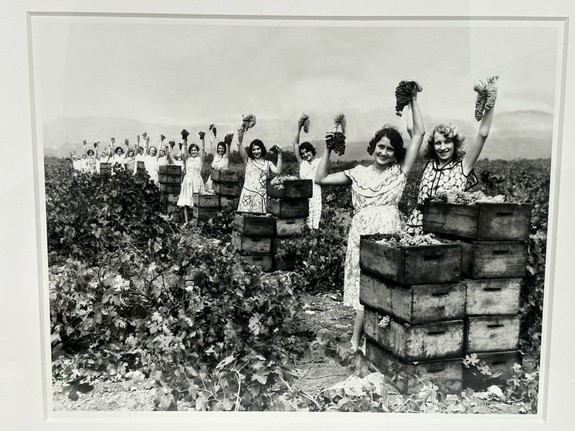
Circa-1930s California grape harvest. New York Times.
This legislation was strongly supported by California's Wine Institute, formed in 1934 to promote and market California wine, and also to advise the industry under the auspices of its Wine Advisory Board (the latter, established in 1938). Slowly but surely, as the quality of American wines began to improve, both the grape growing and production industries began to sharpen their focus on varieties associated with higher quality.
Many of today's old-timers can still recall a time, during the 1960s and '70s, when the quality of table wines was divided into two categories:
• You could buy "jug" wines, which were primarily generic blends, sold for as little as 99 cents a half-gallon (or 1.5-liter, once the liquor industry converted to metrics in 1976), and generally recognized as lower quality, or "everyday drinking," wines.
• Or you could buy higher quality wines, usually sold as varietals and typically bottled in smaller fifth-sized bottles (750 ml after 1976), usually for somewhere between $5 and $9 a bottle, although by the late 1970s average retail bottle prices began creeping up towards $9 or $12 (only towards the end of the '70s was the wine industry "shocked" by wineries, such as Heitz Wine Cellars and Robert Mondavi, pricing their special Cabernet Sauvignons as high as $35).
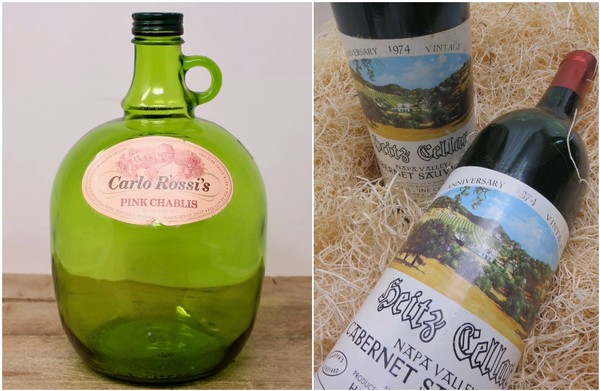
Among the two clear-cut choices American wine consumers could make in the 1960s and '70s were generic jug wines such as Carlo Rossi's Pink Chablis (sold by the gallon or half-gallon for as little as 99 cents), or premium quality varietal Cabernet Sauvignon from Napa Valley (sold in fifths for anywhere from $8 to $35).
Inevitably, smaller wineries—which in the '60s and '70s meant pretty much any company other than E. & J. Gallo, which was still buying more than half the grapes in regions such as Napa Valley and Sonoma County—began to produce varietal wines of such exceptional quality, a groundswell of sentiment within the industry, the trade, the distribution chain as well as consumers began calling for a higher minimal percentage for varietal labels.
The logic was simple: If you buy a bottle sold as Cabernet Sauvignon or Chardonnay (the latter sold as Pinot Chardonnay up until the late '70s), there ought to be more of a guarantee that it will taste as much as possible like Cabernet Sauvignon or Chardonnay. It was felt that the 51% varietal minimum established in the 1930s was inadequate.
Therefore, in 1978 the BATF (Bureau of Alcohol, Tobacco and Firearms, which took over regulation of alcoholic beverages in 1972) finally passed an amendment raising the minimum for varietal wine labels to 75%. This ruling went into effect on January 1, 1983, and remains in place today.
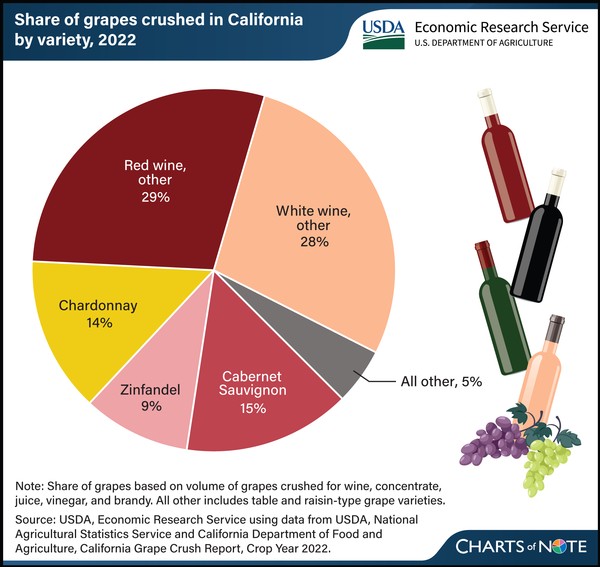
2022 USDA graph showing where California grapes go.
"Varietal character" vs. "sense of place"
Regarding the 2022 graphic above: While the products put out by the California wine industry are multifaceted, the fact that Cabernet Sauvignon represents 15% of the California grape crush in the most recent USDA Economic Research Service report, and Chardonnay 14%, speaks to the prevalent market trend: Consumers are now drinking primarily varietal wines. In the same report, the USDA states that California grows 94% of all grapes in the U.S.; 70% of those grapes go into wine production (the rest, to the table grape and raisin industries).
Hence, the current way in which table wines have been sold and marketed in the U.S. over most of the past thirty or forty years is as varietal rather than generic (now officially classified as semi-generic) wines.
This means, that when wines are rated or appreciated, it is generally in terms of a perceived sense of "varietal character." Therefore, a Cabernet Sauvignon is expected to taste as much as possible like a Cabernet Sauvignon, a Chardonnay as much as possible like a Chardonnay, a Sauvignon Blanc as much as possible like a Sauvignon Blanc, and so forth.
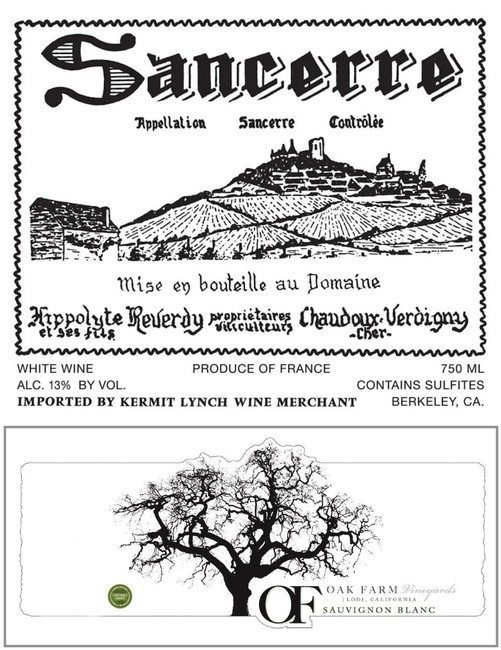
Comparison of how differently wines are labeled and sold: At the top, Sancerre from France, where the appellation (i.e., place name) is most prominent, the name of the producer in smaller letters, with no mention of a grape variety (Sancerre is made from Sauvignon blanc); at the bottom, a typical California label where the brand and varietal are most prominently displayed, with the appellation in smaller letters.
The problem with this, however, is that many of the most popular grape varieties of the world are successfully grown in numerous wine regions, and grapes don't grow in exactly the same ways in each place. It is only inevitable, as each region evolves in terms of production, quality, and self-identity, that both vintners and consumers alike start to appreciate varietal wines not so much for how well they meet expectations of varietal character, but rather how much they differ in varietal character in all the different places.
We are talking primarily about the recent evolution of industries in New World regions where the finest wines are sold as varietals; such as California, Washington, Oregon, British Columbia, Chile, Argentina, Australia, New Zealand, and also regions such as South Africa or Israel that have also only just begun to to find their footing as wine regions.
In long-established European wine-producing countries such as France, Spain, Italy, and Germany, regional differences have been appreciated for far longer. France, in particular, is famously known for its appellation system. That is an official system of production and sales in which wines are differentiated on the basis of where they're grown, not on the basis of the grapes they're made from.
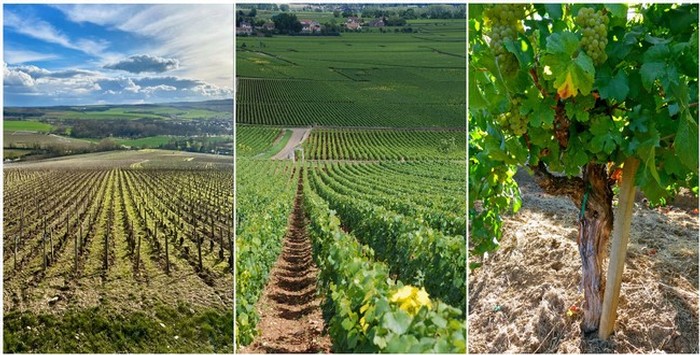
Chardonnay vineyards in France's Chablis (left), Puligny-Montrachet (right), and California's Russian River Valley—three regions so different in climate, topography, and viticultural history, producing such distinctively different wines, they may as well be made from different grapes.
For example: When you have appellations in France's Burgundy region such as Chablis, Puligny-Montrachet, and Mâcon, all of which are planted to the same grape (Chardonnay), these wines are never appreciated, much less "rated," on the basis of how much they taste like "Chardonnay." They are appreciated by how much they taste like Chablis, Puligny-Montrachet, and Mâcon—mostly because the growing conditions of each place make these wines taste so different from one other, they might as well be made from different grapes!
The French, in other words, are long past—or rather, centuries past—the notion of comparing or appreciating wines based on varietal character. They began accepting the differences in growing conditions among their appellations and sub-appellations long ago. To them, it's ABC, like day is light and night is dark. Grape character plays so small a part in this way of thinking, that virtually all the finest French wines (with a few exceptions) are sold by the names of each wine's place of origin, not by varietal.
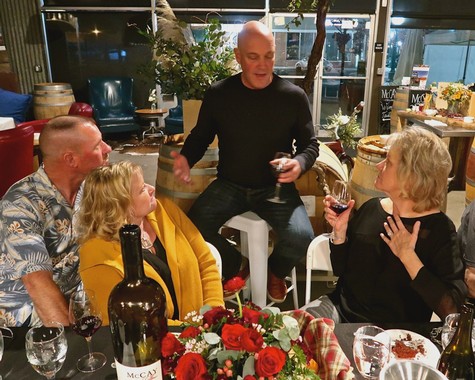
In a Lodi tasting room, older generations of wine lovers whose palates are conditioned by years of appreciation for typical premium varietal California wines.
On the other hand, the wine industries in countries such as the U.S., Canada, Argentina, Australia, and South Africa are still so new, that varietal identity looms larger as a qualitative standard. They have established official appellations, just like in Europe, but most of these countries are just beginning to recognize the best places to grow grapes, let alone understand the unique sensory qualities possible in each place.
All the same, wine quality in the newer regions of the world has been improving so rapidly, that enough wines possessing a tangible sense of place—or terroir, as the French call it—are now being produced. It has reached a point where a good body of these wines are now standing in drastic contrast to wines produced to retain uniformity of varietal character, no matter where they're grown. When that happens, consumers find that they have still another choice—the choice between appreciating wines for their varietal character or for their sense of place—the same way, 50 years ago, Americans were choosing between generic jug wines and premium varietal wines. Which brings up...
Continued in next post: Is appreciation of wine as varietals becoming passé? Part 2, pain and controversy
Lorenza's Melinda Kearney and Bokisch's Elvi Gutierrez and Meghan MacDonald sharing a red made from Lodi's oldest vineyard.
